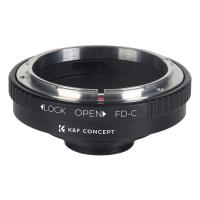How To Find The Fov Of A Microscope ?
To find the field of view (FOV) of a microscope, you can follow these steps:
1. Place a ruler or a stage micrometer slide on the microscope stage.
2. Focus on the ruler or micrometer slide using the lowest magnification objective lens.
3. Determine the number of divisions or units that are visible across the diameter of the field of view.
4. Measure the length of the divisions or units on the ruler or micrometer slide.
5. Calculate the FOV by multiplying the number of divisions or units by the length of each division or unit.
For example, if you can see 10 divisions across the diameter of the FOV and each division is 0.1 mm long, then the FOV would be 1 mm.
It's important to note that the FOV will vary with different magnification objectives. So, repeat the above steps for each objective lens to determine the FOV at different magnifications.
1、 Field of View (FOV) Definition and Importance in Microscopy
The field of view (FOV) refers to the area that is visible through a microscope at a given magnification. It is an important parameter in microscopy as it determines the amount of specimen that can be observed at once. To find the FOV of a microscope, you can follow these steps:
1. Determine the magnification: The FOV is dependent on the magnification of the microscope. Look for the magnification settings on your microscope and select the desired level.
2. Measure the diameter: Place a ruler or a stage micrometer slide under the microscope and focus on the scale. Measure the diameter of the field of view in millimeters.
3. Calculate the FOV: Once you have the diameter, you can calculate the FOV using the formula: FOV = π * (diameter/2)^2. This will give you the area of the field of view in square millimeters.
It is important to note that the FOV will vary depending on the objective lens being used. Higher magnification objectives will have a smaller FOV compared to lower magnification ones. Additionally, the FOV may also be affected by the type of microscope being used, such as compound microscopes having a smaller FOV compared to stereo microscopes.
In recent years, advancements in microscopy technology have led to the development of digital microscopes with built-in software that can automatically calculate the FOV. These microscopes provide a more accurate and convenient way to determine the FOV, eliminating the need for manual measurements.
Understanding the FOV is crucial in microscopy as it helps in determining the size, shape, and distribution of microscopic structures within a specimen. It also aids in comparing and analyzing different samples.

2、 Calculating FOV: Microscope Magnification and Objective Lens Parameters
To find the field of view (FOV) of a microscope, you can use the formula: FOV = (diameter of field of view at low power) / (magnification at low power). This formula allows you to calculate the FOV based on the magnification and objective lens parameters of the microscope.
First, you need to determine the diameter of the field of view at low power. This can be done by measuring the diameter of a known object, such as a stage micrometer, that is visible under the microscope at low power. Alternatively, you can use a calibration slide with a known scale.
Next, you need to determine the magnification at low power. This information is usually provided by the microscope manufacturer and can be found on the objective lens itself. The magnification is typically indicated by a number followed by an "x" (e.g., 10x, 40x, 100x).
Once you have these two values, you can plug them into the formula to calculate the FOV. For example, if the diameter of the field of view at low power is 2 millimeters and the magnification at low power is 10x, the FOV would be 0.2 millimeters.
It is important to note that the FOV will change as you switch to higher magnifications. As you increase the magnification, the FOV will decrease, allowing you to see smaller details. Therefore, it is necessary to recalculate the FOV for each magnification level.
Additionally, it is worth mentioning that some microscopes have built-in mechanisms to measure the FOV directly. These microscopes may have a reticle or a graticule in the eyepiece that allows you to directly measure the FOV without the need for calculations.
In conclusion, calculating the FOV of a microscope involves measuring the diameter of the field of view at low power and dividing it by the magnification at low power. This formula allows you to determine the FOV for different magnification levels, helping you understand the size and scale of the objects you observe under the microscope.

3、 Measuring FOV: Using a Stage Micrometer or Calibration Slide
To find the field of view (FOV) of a microscope, one common method is to use a stage micrometer or calibration slide. This method allows for accurate measurement of the FOV and is widely used in laboratories and research facilities.
A stage micrometer is a glass slide that contains a precise scale etched onto its surface. The scale is usually in millimeters or micrometers and is used as a reference for measuring the FOV. To measure the FOV, the stage micrometer is placed on the microscope stage, and the scale is aligned with the microscope's field of view.
By counting the number of divisions on the scale that are visible within the FOV, one can calculate the size of the FOV. For example, if 10 divisions of the micrometer scale are visible in the FOV and each division represents 0.1 mm, then the FOV would be 1 mm.
It is important to note that the FOV may vary depending on the magnification of the microscope. Higher magnifications generally result in smaller FOVs, while lower magnifications provide larger FOVs. Therefore, it is necessary to repeat the measurement process for each magnification setting to obtain accurate FOV measurements.
Additionally, it is worth mentioning that advancements in technology have led to the development of digital microscopes with built-in software that can automatically measure the FOV. These microscopes use image analysis algorithms to calculate the FOV based on the captured image. This method eliminates the need for manual measurements and provides a more efficient and accurate way of determining the FOV.
In conclusion, measuring the FOV of a microscope can be done using a stage micrometer or calibration slide. This method allows for precise measurements and is widely used in scientific research. However, advancements in technology have introduced digital microscopes that offer automated FOV measurement capabilities, providing a more convenient and accurate alternative.

4、 FOV Variations: Different Microscope Types and Objectives
To find the field of view (FOV) of a microscope, you need to consider the microscope type and the objective being used. The FOV refers to the area visible through the microscope at a given magnification. It is an important parameter as it determines the amount of specimen that can be observed at once.
Different microscope types, such as compound microscopes and stereo microscopes, have different FOV characteristics. Compound microscopes typically have a smaller FOV compared to stereo microscopes. This is because compound microscopes are designed for higher magnification and resolution, while stereo microscopes provide a wider FOV for a larger overview of the specimen.
The FOV also varies depending on the objective being used. Microscopes have multiple objectives with different magnification powers. Higher magnification objectives generally have a smaller FOV compared to lower magnification objectives. This is because higher magnification requires a narrower field to maintain resolution.
To find the FOV of a microscope, you can use a stage micrometer, which is a slide with a known scale. By measuring the number of divisions visible under the microscope and knowing the scale of the micrometer, you can calculate the FOV. Alternatively, some microscopes have a built-in reticle or eyepiece graticule with a known scale that can be used to estimate the FOV.
It is important to note that the FOV can vary between different microscope models and manufacturers. Therefore, it is always recommended to consult the microscope's user manual or contact the manufacturer for specific FOV information.
In recent years, advancements in microscopy technology have led to the development of digital microscopes and imaging software that can accurately measure and calculate the FOV. These tools provide a more precise and convenient way to determine the FOV, allowing for better accuracy and reproducibility in scientific research and analysis.









































